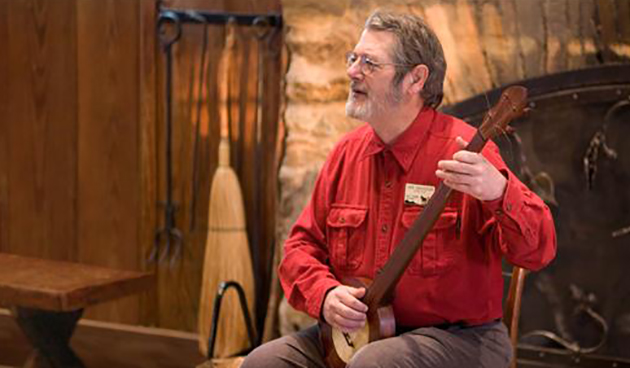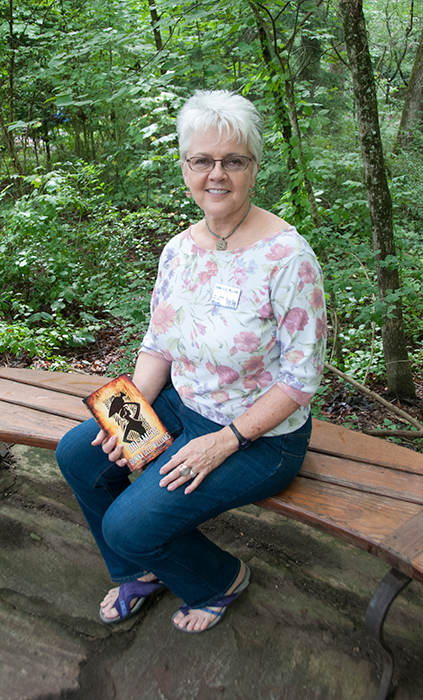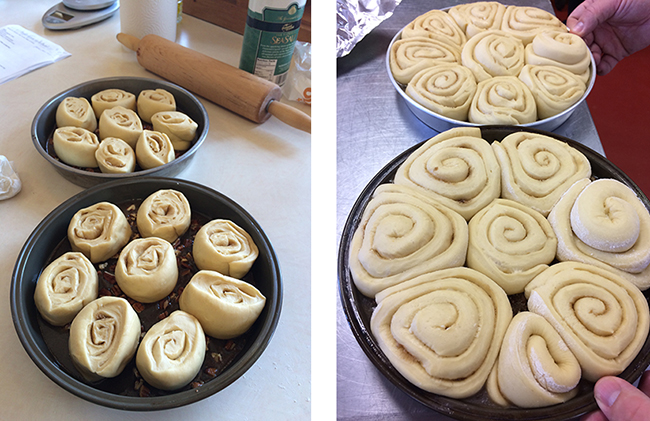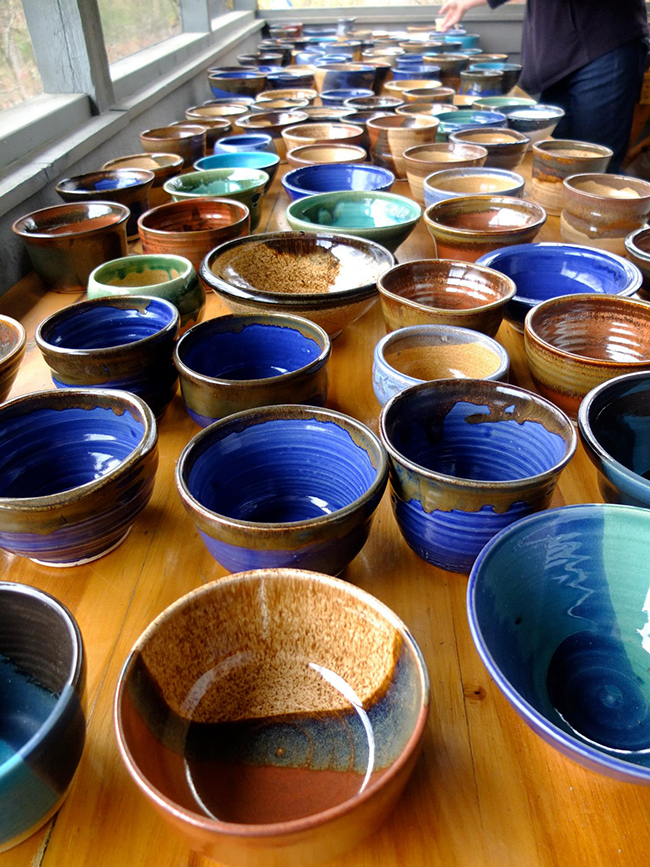
Community
01 Sep A Gingerbread House to Call Your Own
Are you ever inspired during the holiday season and decide to try your hand at making a gingerbread house from scratch? Annnnnd then your dreams of edible decorative glory come crashing down when your gingerbread house looks more like a shanty shack than a storybook chalet? I’ve been there, and maybe you have too. Have no fear! Expert baker and cake decorator, Jodi Rhoden will be here to save the (holi)day with her upcoming weekend class: Handmade Gingerbread Houses. [caption id="attachment_15383" align="aligncenter" width="630"]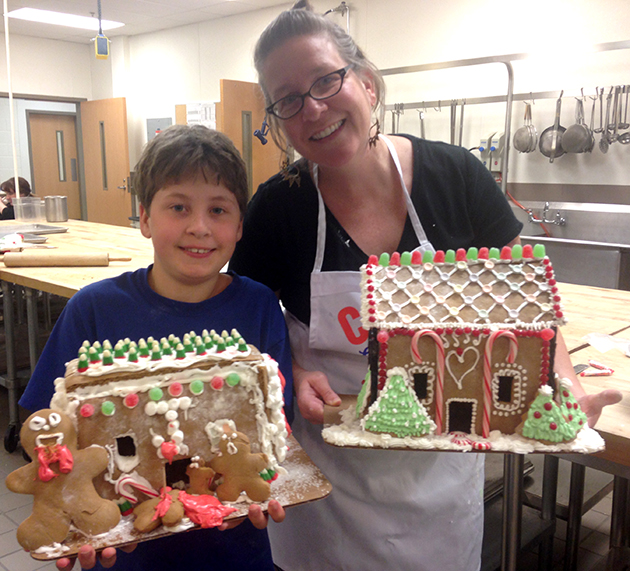 Jodi and her son Jasper show off their gingerbread house creations.[/caption]
Jodi and her son Jasper show off their gingerbread house creations.[/caption]
 CP: What do you like about gingerbread houses?
JR: The first time I ever made a gingerbread house, I was enchanted. I really felt like I wanted to become miniature and live inside the house! It feels completely magical and fantastical to create a little home out of candy and sweet gingerbread, and the smells, and textures (and of course, tastes, because there’s always scrap pieces of gingerbread that need to be eaten!) are uniquely pleasurable to the senses.
[caption id="attachment_15381" align="alignright" width="226"]
CP: What do you like about gingerbread houses?
JR: The first time I ever made a gingerbread house, I was enchanted. I really felt like I wanted to become miniature and live inside the house! It feels completely magical and fantastical to create a little home out of candy and sweet gingerbread, and the smells, and textures (and of course, tastes, because there’s always scrap pieces of gingerbread that need to be eaten!) are uniquely pleasurable to the senses.
[caption id="attachment_15381" align="alignright" width="226"]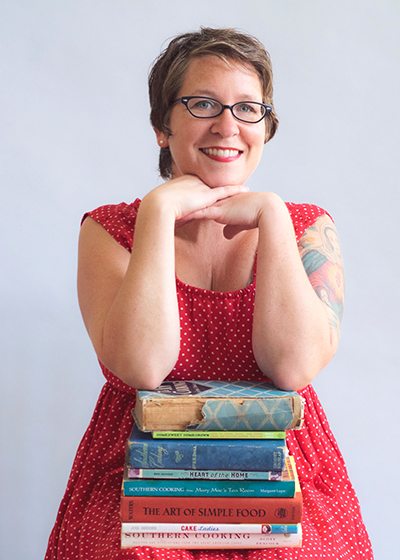 Photo by Nicole McConville[/caption]
CP: Do you have to be architecturally skilled to make a good gingerbread house? Who is the ideal student for your class?
JR: You do not have to be architecturally skilled to build a gingerbread house! The icing and the candy make it very forgiving. Like most things worth doing, though, it does take time. We will spend a good amount of time in the planning phase, cutting and measuring templates to create the right sizes for the pieces. I also always like to bake extra pieces, in case something breaks or bakes wonky.
CP: Have you ever participated in the National Gingerbread house Competition is at the Grove Park Inn? Did the proximity of this annual event in Asheville influence your interest in gingerbread house making?
JR: It has always been my dream to enter a house into the competition at the Grove Park Inn, though up until now I have been too busy with my business, Short Street Cakes, to seriously consider it. But now that I have sold my business to my employee, this just might be the right time!
Photo by Nicole McConville[/caption]
CP: Do you have to be architecturally skilled to make a good gingerbread house? Who is the ideal student for your class?
JR: You do not have to be architecturally skilled to build a gingerbread house! The icing and the candy make it very forgiving. Like most things worth doing, though, it does take time. We will spend a good amount of time in the planning phase, cutting and measuring templates to create the right sizes for the pieces. I also always like to bake extra pieces, in case something breaks or bakes wonky.
CP: Have you ever participated in the National Gingerbread house Competition is at the Grove Park Inn? Did the proximity of this annual event in Asheville influence your interest in gingerbread house making?
JR: It has always been my dream to enter a house into the competition at the Grove Park Inn, though up until now I have been too busy with my business, Short Street Cakes, to seriously consider it. But now that I have sold my business to my employee, this just might be the right time!
28 Aug The Fantastical Writings of Donna Glee Williams
Donna Glee Williams, is a...
18 Aug Adventures in Kaleidoscope Land
 [caption id="attachment_15368" align="alignright" width="210"]
[caption id="attachment_15368" align="alignright" width="210"]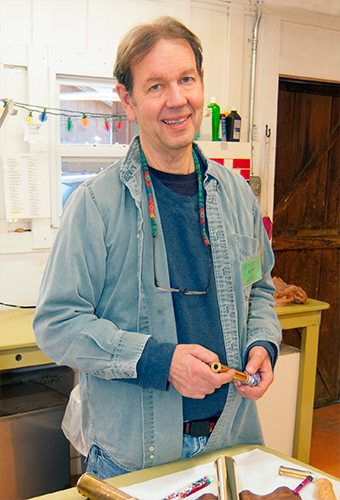 Scott Cole[/caption]
Earlier this month, I had the chance to take a class on kaleidoscopes with longtime Folk School instructor Scott Cole. I’ve taken many classes at the Folk School, but I’ll admit I was a little daunted to work with glass and metal, both materials I’ve had little experience with.
The first night, we set up our studio as a group, looked at examples of the many styles of kaleidoscopes, and had our first small challenge: taping a set of three long mirrors together to create the reflective pattern found in many kaleidoscopes. Our first night’s homework was deceptively simple: take home your mirrors and master their assembly.
The next day, Scott walked us through the process for making a basic brass kaleidoscope. We learned to cut glass, cut our mirrors, glue with epoxy (occasionally a sticky mess for some of us), and how to shape small pieces of glass for our kaleidoscopes’ object cell. While our first kaleidoscopes had matching exteriors and mirror systems, we each found ways to personalize our scopes in ways that matched our individual sense of color, movement, and texture.
Scott Cole[/caption]
Earlier this month, I had the chance to take a class on kaleidoscopes with longtime Folk School instructor Scott Cole. I’ve taken many classes at the Folk School, but I’ll admit I was a little daunted to work with glass and metal, both materials I’ve had little experience with.
The first night, we set up our studio as a group, looked at examples of the many styles of kaleidoscopes, and had our first small challenge: taping a set of three long mirrors together to create the reflective pattern found in many kaleidoscopes. Our first night’s homework was deceptively simple: take home your mirrors and master their assembly.
The next day, Scott walked us through the process for making a basic brass kaleidoscope. We learned to cut glass, cut our mirrors, glue with epoxy (occasionally a sticky mess for some of us), and how to shape small pieces of glass for our kaleidoscopes’ object cell. While our first kaleidoscopes had matching exteriors and mirror systems, we each found ways to personalize our scopes in ways that matched our individual sense of color, movement, and texture.
13 Jun Special Auction Donation of Marguerite’s Treasures
[caption id="attachment_15082" align="aligncenter" width="553"]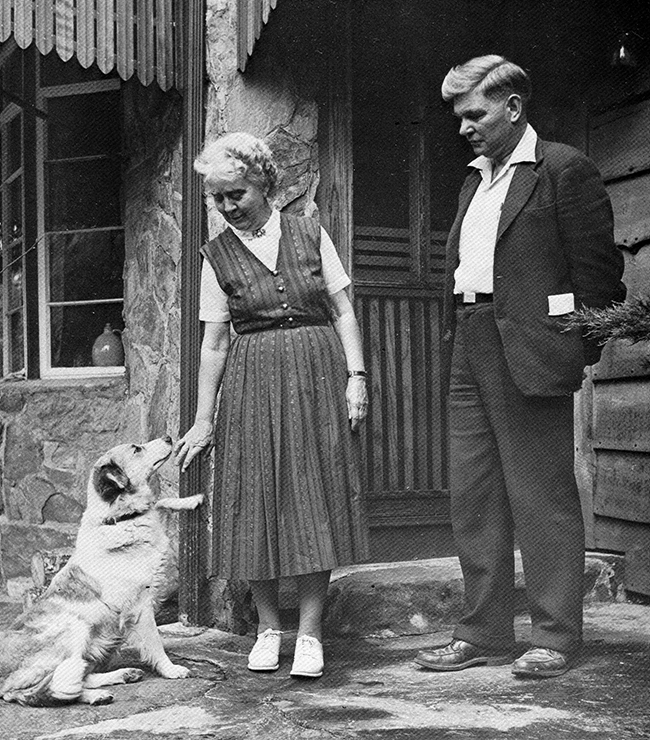 Marguerite and Georg at Bidstrup Acres[/caption]
Our May 31st Gala & Benefit Auction, last Saturday 11, 2016, was a success! We are still waiting on the official grand total, but we are happy that all proceeds raised will help improve the school’s sixteen on-campus studios and further our mission. We thank the artists who donated fine work, our many dedicated volunteers, our Folk School staff members, and our generous Auction guests.
Marguerite and Georg at Bidstrup Acres[/caption]
Our May 31st Gala & Benefit Auction, last Saturday 11, 2016, was a success! We are still waiting on the official grand total, but we are happy that all proceeds raised will help improve the school’s sixteen on-campus studios and further our mission. We thank the artists who donated fine work, our many dedicated volunteers, our Folk School staff members, and our generous Auction guests.
08 Jun Drawing in the Moment
 [caption id="attachment_15062" align="alignright" width="225"]
[caption id="attachment_15062" align="alignright" width="225"]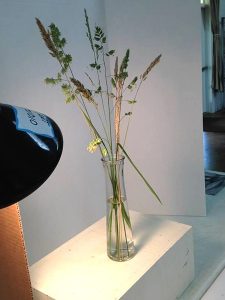 Lighting a still life with vase and grasses[/caption]
What’s better than a week at the Folk School? Two weeks, of course. That’s why after teaching the Science of Bread in May I stayed to take Drawing Techniques and Tools with Pebbie Mott and Pam Beagle-Daresta.
The first day we learned about the tools we’d be trying: drawing pencils (which range in darkness from the pale 9H to the black 9B), water color pencils (draw, then add water), charcoals (soft and hard, plus white to use on gray paper), ink with a brush and bamboo pen (Pam brought walnut ink she’d made in a previous class), and Micron pens. After trying the techniques, we’d pick one for a final project.
[caption id="attachment_15060" align="aligncenter" width="630"]
Lighting a still life with vase and grasses[/caption]
What’s better than a week at the Folk School? Two weeks, of course. That’s why after teaching the Science of Bread in May I stayed to take Drawing Techniques and Tools with Pebbie Mott and Pam Beagle-Daresta.
The first day we learned about the tools we’d be trying: drawing pencils (which range in darkness from the pale 9H to the black 9B), water color pencils (draw, then add water), charcoals (soft and hard, plus white to use on gray paper), ink with a brush and bamboo pen (Pam brought walnut ink she’d made in a previous class), and Micron pens. After trying the techniques, we’d pick one for a final project.
[caption id="attachment_15060" align="aligncenter" width="630"]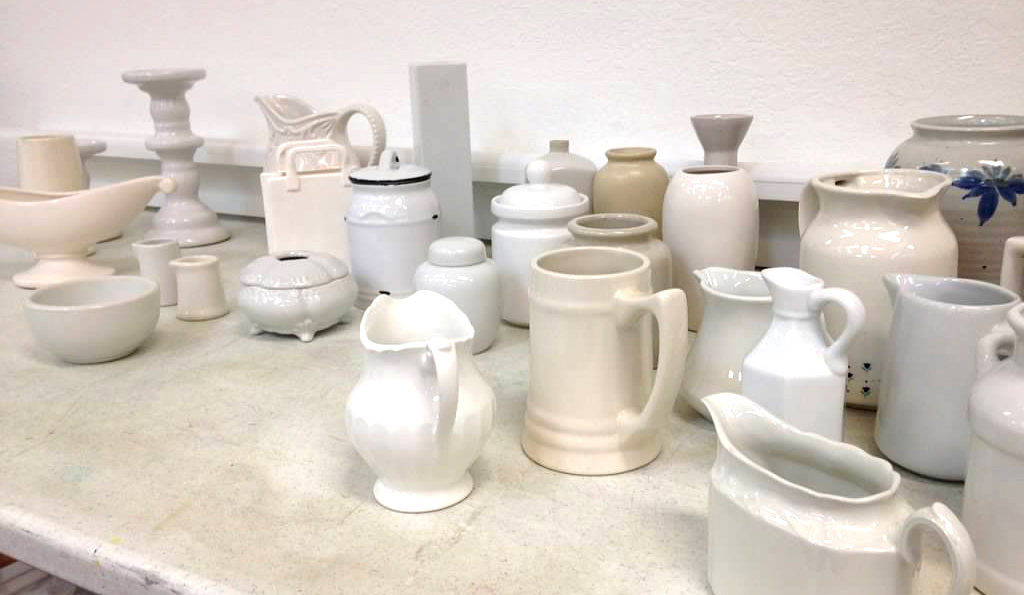 White vessel to practice values with light and shadows[/caption]
White vessel to practice values with light and shadows[/caption]
31 May My Fascinating Lunch with Tim Ryan: Auctions, Dibbles, Zen, Gardens & More
Posted at 12:15h
in Instructor Voices, Stories: Blacksmithing, Stories: Gardening & Homesteading 6 Comments
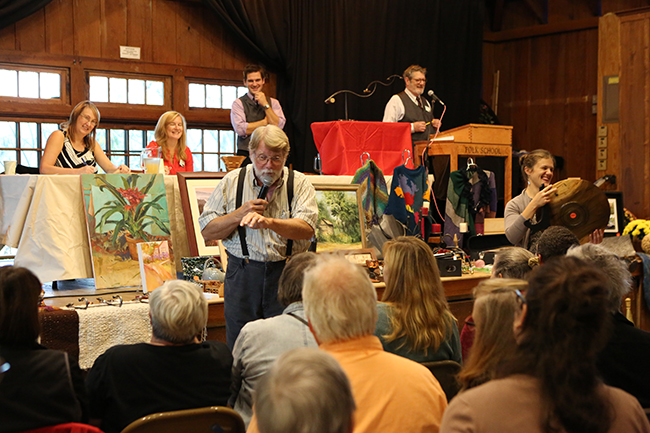 I first met Tim Ryan on a misty morning in the Folk School Garden when I was a Work/Study in 2011. My immediate impression of him was that he was a very witty & interesting character with lots of fantastic stories. Tim is involved in the Folk School in so many different ways. I thought this would be a good moment to sit down and learn a little bit about Tim the gardener, auctioneer, medicine showman, raconteur, kettle cooker, blacksmith, instructor, former Folk School Board member, bibliophile, and storyteller, that is Tim Ryan. We recently sat down over lunch to talk about many things. Enjoy our interview!
CP: When did you first come to the Folk School?
[caption id="attachment_15023" align="alignright" width="289"]
I first met Tim Ryan on a misty morning in the Folk School Garden when I was a Work/Study in 2011. My immediate impression of him was that he was a very witty & interesting character with lots of fantastic stories. Tim is involved in the Folk School in so many different ways. I thought this would be a good moment to sit down and learn a little bit about Tim the gardener, auctioneer, medicine showman, raconteur, kettle cooker, blacksmith, instructor, former Folk School Board member, bibliophile, and storyteller, that is Tim Ryan. We recently sat down over lunch to talk about many things. Enjoy our interview!
CP: When did you first come to the Folk School?
[caption id="attachment_15023" align="alignright" width="289"]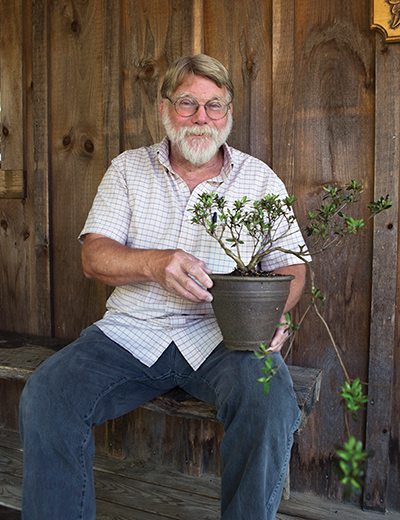 Tim Ryan with a bonsai tree[/caption]
TR: I had gotten divorced and it killed me. This was 26 years ago. I was depressed and blue and three things saved me: my Blacksmithing buddies, Al-Anon, and having a daughter.
At one of the Appalachian Area Chapter Blacksmith Meetings in Mt. Juliet TN, they were having a raffle and the winner would get a free class at the Folk School. Well I don’t usually enter raffles, but my Blacksmithing buddies convinced me to enter and I won. I think they set it up because I was depressed and they knew I needed something else to focus on. It worked because I won the raffle in March or April and the class wasn’t until October, so all summer long I worked hard to become a better blacksmith, worthy of the class at the Folk School.
In the fall of 1990, I used my scholarship to take a 2-week Blacksmithing class at the Folk School with Francis Whitaker, which I was by no means near prepared for, naturally.
[caption id="attachment_15036" align="aligncenter" width="630"]
Tim Ryan with a bonsai tree[/caption]
TR: I had gotten divorced and it killed me. This was 26 years ago. I was depressed and blue and three things saved me: my Blacksmithing buddies, Al-Anon, and having a daughter.
At one of the Appalachian Area Chapter Blacksmith Meetings in Mt. Juliet TN, they were having a raffle and the winner would get a free class at the Folk School. Well I don’t usually enter raffles, but my Blacksmithing buddies convinced me to enter and I won. I think they set it up because I was depressed and they knew I needed something else to focus on. It worked because I won the raffle in March or April and the class wasn’t until October, so all summer long I worked hard to become a better blacksmith, worthy of the class at the Folk School.
In the fall of 1990, I used my scholarship to take a 2-week Blacksmithing class at the Folk School with Francis Whitaker, which I was by no means near prepared for, naturally.
[caption id="attachment_15036" align="aligncenter" width="630"]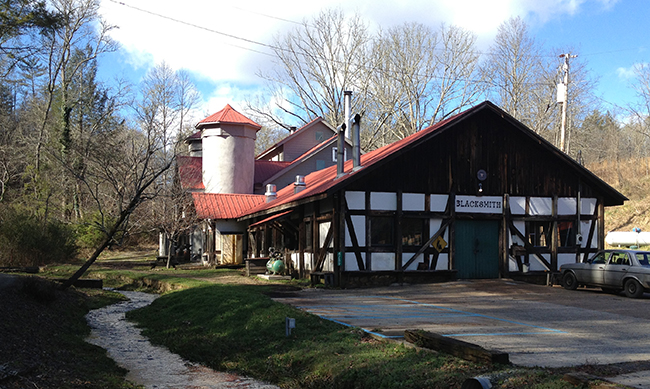 The Folk School Blacksmith Shop (Original Francis Whitaker Shop in the foreground, the new Clay Spencer Shop in the background)[/caption]
The Folk School Blacksmith Shop (Original Francis Whitaker Shop in the foreground, the new Clay Spencer Shop in the background)[/caption]
24 May Pollinators in the Garden: Bees, Birds & Butterflies
I just finished teaching a weekend class on pollinators and gardening at the Folk School. My class was a great group of folks. We learned about seeding starting and growing native milkweeds for monarch eggs and caterpillars, planting flowers, native shrubs and trees for bees, butterflies, and hummingbirds, the challenges of neonicotinoids and herbicides. The weekend exhibited beautiful May weather! Enjoy our photo album: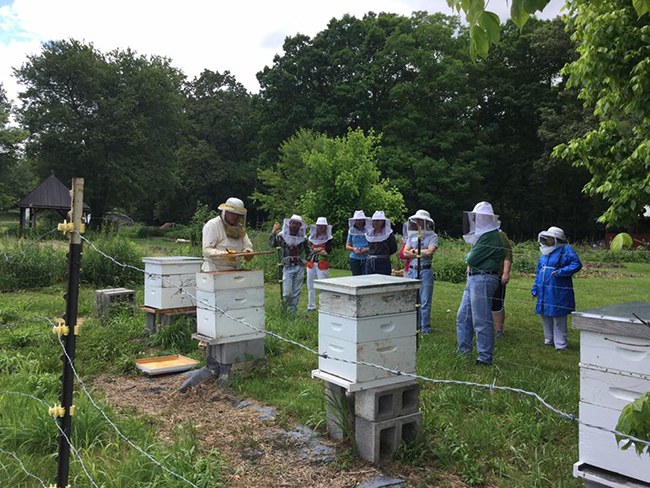 John Clarke in the Folk School bee yard, showing the class the old bee hives, plus two brand new Russian bee colonies installed from the Beekeeping Class three weeks ago with Virginia Webb. Russian bees seem to be more varrora mite resistant than our beloved Italian honey bees.
John Clarke in the Folk School bee yard, showing the class the old bee hives, plus two brand new Russian bee colonies installed from the Beekeeping Class three weeks ago with Virginia Webb. Russian bees seem to be more varrora mite resistant than our beloved Italian honey bees.
21 May Emily’s Mom’s Sticky Buns
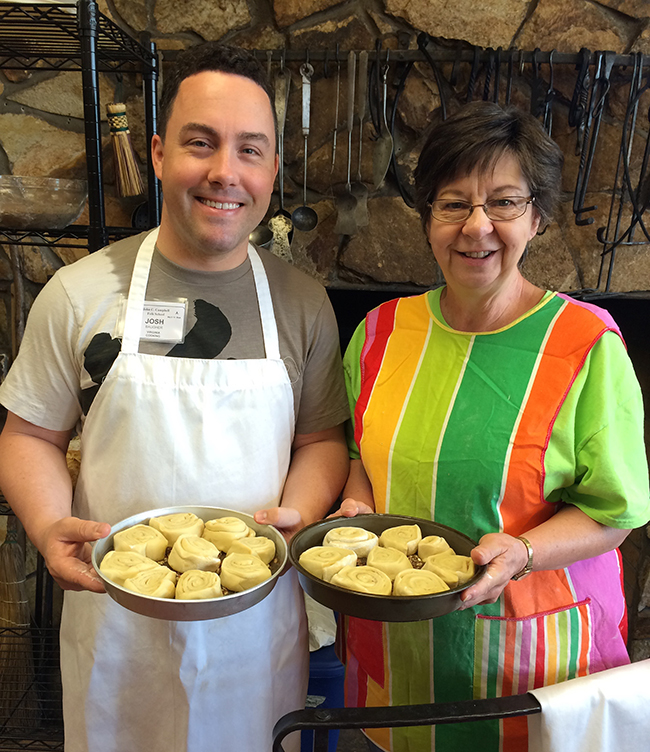 Every year, we have a sweet tooth soothing tradition in Emily Buehler's bread baking class. On Thursday, students team up to make a special recipe: Emily's Mom's Sticky Buns. The beginning of the week is spent learning the basics of breads like baguettes, sourdough loaves and whole wheat sandwich bread. By Thursday, students are happy to shift gears from savory to sweet for this divine gooey treat.
Every year, we have a sweet tooth soothing tradition in Emily Buehler's bread baking class. On Thursday, students team up to make a special recipe: Emily's Mom's Sticky Buns. The beginning of the week is spent learning the basics of breads like baguettes, sourdough loaves and whole wheat sandwich bread. By Thursday, students are happy to shift gears from savory to sweet for this divine gooey treat.
13 May Empty Bowls Presents Checks to Local Food Banks
Empty Bowls checks of $3,188 each were presented this week to the Cherokee County Sharing Center and Clay County Food Pantry. The 10th Annual Empty Bowls was held on March 12 at the Folk School. The Empty Bowls fundraiser for Cherokee and Clay County food banks has been organized by Resident Potter Mike Lalone and hosted by the John C. Campbell Folk School for the past 10 years. Thanks again to everyone who supported this event! [caption id="attachment_14845" align="aligncenter" width="650"]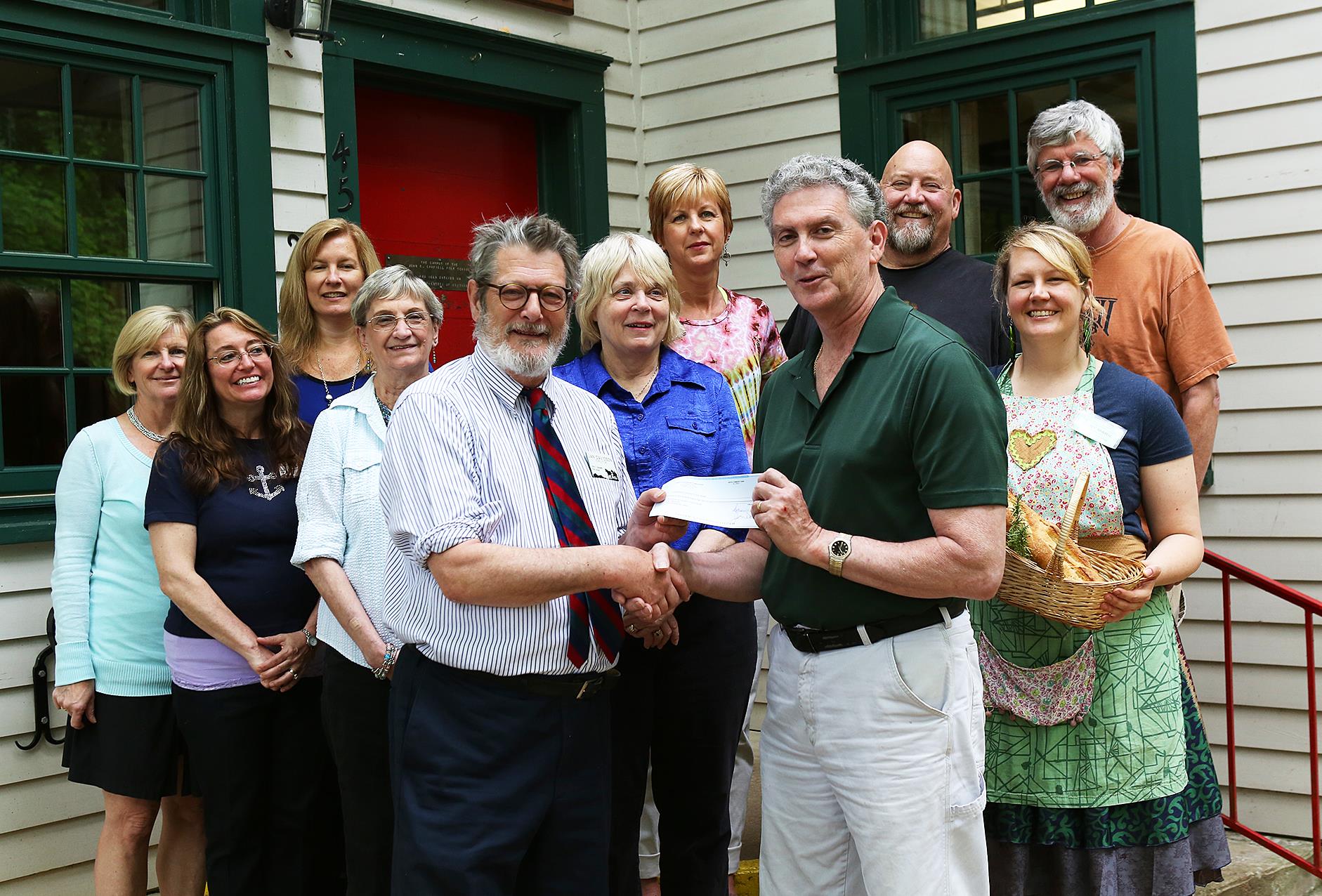 Folk School Director Jan Davidson presents a check to Robert Merrill, President of Cherokee County Sharing Center. Also pictured from left to right: Kate Delong, Ellen Sandor, Jennifer Slucher, Dianne Arnold, Marianne Hatchett, Colleen Plonsky, Mike Lalone, Cory Marie Podielski, and Harry Hearne.[/caption]
Folk School Director Jan Davidson presents a check to Robert Merrill, President of Cherokee County Sharing Center. Also pictured from left to right: Kate Delong, Ellen Sandor, Jennifer Slucher, Dianne Arnold, Marianne Hatchett, Colleen Plonsky, Mike Lalone, Cory Marie Podielski, and Harry Hearne.[/caption]



